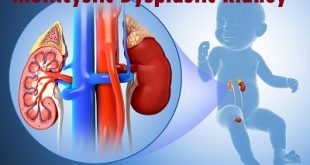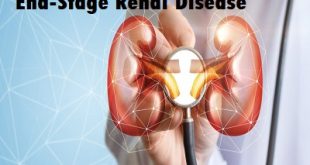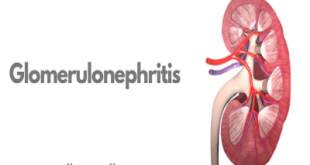Definition
A kidney stone is a hard, crystalline mineral material formed within the kidney or urinary tract. Kidney stones are a common cause of blood in the urine (hematuria) and often severe pain in the abdomen, flank, or groin. Kidney stones are sometimes called renal calculi.
The condition of having kidney stones is termed nephrolithiasis. Having stones at any location in the urinary tract is referred to as urolithiasis, and the term ureterolithiasis is used to refer to stones located in the ureters.
Pathophysiology of stone formation
- Calcium stone formation begins with the formation of calcium phosphate deposits (Randall plaques) on the external urothelial surface of the papilla. Hence, calcium oxalate stones typically have a small component of calcium phosphate (apatite or brushite).
- If small particles were not anchored to these plaques, they would simply wash into the urine. Stone formation requires that crystalloids be present in supersaturating concentrations; but even when this condition is met, the stone formation may not occur in the presence of adequate concentrations of inhibitors, including citrate, magnesium, and macromolecules.
- On the other hand, some substances, such as uric acid and alkaline urine pH, act as promoters to facilitate stone formation at a given level of supersaturation.
- Urinary saturation approximates the ratio of the concentration product (eg, of calcium oxalate) to its solubility in urine. At values greater than 1 (supersaturation), crystal formation is favored; values below 1 do not support the stone formation and some crystals (uric acid, cystine) may even dissolve.
- Stone formation correlates with supersaturation values, and measuring supersaturation may be helpful, for example, in monitoring calcium-phosphorus supersaturation in patients with stones who are receiving alkali therapy.
- Commercial laboratories offer urinary metabolic profiles that also include urinary saturation of calcium oxalate, calcium phosphate, and uric acid
Kidney Stones
Types of Kidney stone
Knowing the type of kidney stone helps determine the cause and may give clues on how to reduce your risk of getting more kidney stones. Types of kidney stones include:
Calcium stones: Most kidney stones are calcium stones, usually in the form of calcium oxalate. Oxalate is a naturally occurring substance found in food. Some fruits and vegetables, as well as nuts and chocolate, have high oxalate levels. Your liver also produces oxalate. Dietary factors, high doses of vitamin D, intestinal bypass surgery and several metabolic disorders can increase the concentration of calcium or oxalate in urine. Calcium stones may also occur in the form of calcium phosphate.
Struvite stones: Struvite stones form in response to an infection, such as a urinary tract infection. These stones can grow quickly and become quite large, sometimes with few symptoms or little warning.
Uric acid stones: Uric acid stones can form in people who don’t drink enough fluids or who lose too much fluid, those who eat a high-protein diet, and those who have gout. Certain genetic factors also may increase your risk of uric acid stones.
Cystine stones: These stones form in people with a hereditary disorder that causes the kidneys to excrete too much of certain amino acids (cystinuria).
Other stones: Other, rarer types of kidney stones can occur.
Kidney stone risk factors
Risk factors include:
Dehydration: Not drinking enough fluids can make pee become extra-concentrated. This increases the chance of crystals forming.
An unhealthy diet and lifestyle: Drinking lots of sugary, caffeinated, or sports drinks and eating a diet high in sodium (salt) can increase the risk of calcium stones. Obesity also can make kids more likely to get them.
Urinary tract defects: A structural defect in the urinary tract can block the flow of pee and create an area where it collects in a tiny pool. When pee stops flowing, crystal-forming substances may settle together and form stones.
Some medicines: Some prescription and over-the-counter medicines can increase the risk of kidney stones if taken in large doses.
Metabolic disorders: Having a metabolic disorder (a problem in the way the body breaks down and uses food) can lead to concentrated levels of oxalate (a substance made in the body and found in some foods) or cystine in the urine.
Cystinuria: This genetic condition causes too much cystine to pass from the kidneys into the pee, causing cystine stones.
Other medical conditions: A number of diseases and conditions can increase the risk of kidney stones, including gout (a type of arthritis), other kidney diseases, conditions that affect the thyroid or parathyroid gland, and some urinary tract infections (UTIs).
Causes of Kidney stone
Kidney stones are common. Some types run in families. They often occur in premature infants.
There are different types of kidney stones. The cause of the problem depends on the type of stone.
Stones can form when urine contains too much of certain substances that form crystals. These crystals can develop into stones over weeks or months.
- Calcium stones are the most common. They are most likely to occur in men between ages 20 to 30. Calcium can combine with other substances to form the stone.
- Oxalate is the most common of these. Oxalate is present in certain foods such as spinach. It is also found in vitamin C supplements. Diseases of the small intestine increase your risk of these stones.
Calcium stones can also form from combining with phosphate or carbonate.
Other types of stones include:
- Cystine stones can form in people who have cystinuria. This disorder runs in families. It affects both men and women.
- Struvite stones are mostly found in women who have a urinary tract infection. These stones can grow very large and can block the kidney, ureter, or bladder.
- Uric acid stones are more common in men than in women. They can occur with gout or chemotherapy.
- Other substances such as certain medicines also can form stones.
The biggest risk factor for kidney stones is not drinking enough fluids. Kidney stones are more likely to occur if you make less than 1 liter (32 ounces) of urine a day.
Symptoms
Stones in the kidney often do not cause any signs and can go undiagnosed. When a stone leaves the kidney, it travels to the bladder through the ureter. Often the stone can become lodged in the ureter. When the stone blocks the flow of urine out of the kidney, it can cause the kidney to swell (hydronephrosis), often causing a lot of pain.
Common symptoms of kidney stones are:
- Sharp, cramping pain in the back and side, often moving to the lower abdomen or groin. Some women say the pain is worse than childbirth labor pains. The pain often starts suddenly and comes in waves. It can come and go as the body tries to get rid of the stone.
- A feeling of intense need to urinate.
- Urinating more often or a burning feeling during urination.
- Urine that is dark or red due to blood. Sometimes urine has only small amounts of red blood cells that can’t be seen with the naked eye.
- Nausea and vomiting.
- For men, you may feel pain at the tip of the penis.
Kidney stone complications
Complications can occur after the treatment of large kidney stones.
Your surgeon should explain these to you before you have the procedure.
Possible complications will depend on the type of treatment you have and the size and position of your stones.
Complications could include:
- Sepsis, an infection that spreads through the blood, causing symptoms throughout the whole body
- A blocked ureter caused by stone fragments (the ureter is the tube that attaches the kidney to the bladder)
- An injury to the ureter
- A urinary tract infection (UTI)
- Bleeding during surgery
- Pain
Diagnosis and test
Diagnosis starts with a physical exam and review of your medical history. Other tests include:
- Blood test: to measure how well your kidneys are functioning, to look for signs of infection, and to look for biochemical problems that lead to forming kidney stones.
- Urine sample test: to look for signs of an infection and to examine the levels of the stone-forming substances- calcium, oxalate, urate, cysteine, xanthine, and phosphate.
- Imaging tests: to see the size, shape, and location of the stones; determine the most suitable treatment, and sometimes to review the result of treatment. Types of imaging tests used are X-rays, CT scan, and ultrasound. Both X-ray tests and CT scans use a small amount of radiation to create their images.
Two types of X-rays are used: a standard X-ray of the urinary tract or a special type of X-ray called an intravenous pyelogram (IVP). If an IVP is ordered, you receive an injection of a dye in your vein before the X-ray is taken. The dye is used to get a sharper image of problems in the kidneys, ureters, and bladder resulting from urine being blocked.
A CT scan of the abdomen is an imaging test that creates a 3-dimensional view of the organs within the abdominal cavity. It is used with or without the injection of a dye in your vein. This test shows the stone size and location and conditions that may have caused the stone to form. In addition, the other organs within this area of the body can be evaluated.
An ultrasound of the urinary tract uses sound waves to detect kidney stones and indirect signs of kidney stones, such as changes in the kidney’s size and shape.
Treatment
Kidney stones usually pass on their own without causing any long-term problems. If they don’t, or if you’re in a lot of pain, your doctor can break up or remove the crystals.
Your treatment depends on where and how big your stone is and what symptoms you have.
First, You Wait
If your stone doesn’t bother you, your doctor may suggest you wait 2-4 weeks for it to pass on its own. She may tell you to drink extra water to help flush it out of your body.
She may ask you to catch the stone in a strainer when you pee. A lab can test it for minerals to see if medication might prevent more stones.
Medicines
If you’re in discomfort, you can manage your symptoms while you wait for the stone to exit.
Over-the-counter pain relievers such as acetaminophen or ibuprofen can help. You might also need a drug to ease nausea.
Prescription drugs can help hurry the stone along:
Calcium channel blockers and alpha-blockers: These relax your ureter, the tube through which pee passes from your kidney to your bladder. A wider ureter will help the stone move more quickly.
Potassium citrate or sodium citrate: If your stone is made from uric acid, the doctor might give you one of these solutions to dissolve it.
Surgery
Sometimes, a stone is too big to come out by itself. Your doctor may have to break it up or remove it. She also may do that if you are:
- In a lot of pain
- Have an infection
- Unable to pee because the stone is blocking the flow
Your doctor can choose from several procedures.
Shock wave lithotripsy (SWL) is the most common treatment in US. It works best for small or medium stones. Your doctor aims high-energy sound waves to break up the kidney stone into little pieces. The shock waves come from outside the body, which is why the procedure sometimes is called extracorporeal SWL.
Ureteroscopy, which involves passing a very thin tube (ureteroscope) into the urinary tract to the stone’s location, where instruments can then be used to remove the stone or break it up for easier removal. Occasionally, you may need a small hollow tube (ureteral stent) placed in the ureter for a short time to keep it open and drain urine and any stone pieces. Ureteroscopy is often used for stones that have moved from the kidney to the ureter.
Percutaneous nephrolithotomy, which is the most effective way to remove large stones. This surgery generally requires a small (1 cm) incision in the side or back and the use of a scope to remove the kidney stone. This procedure is performed on an inpatient basis.
Prevention of Kidney stone
Some general precautions for a patient diagnosed with kidney stone disease are:
- Increase your daily fluid intake (water intake should exceed two liters per day)-if you already have a renal failure you need to check with your doctor about how much water you can have.
- Lower the content of animal protein in your diet (reduce meat intake)
- Limit coffee, tea, and cola intake
- Do not take the excess of Vitamin D supplements. Take them only as prescribed.
- Lower daily salt intake (2000 mg sodium restriction per day)
- Lemon and cranberry juice are considered safe
- Lower intake of high oxalate content foods (example: spinach, beets, and chocolate)
- Reduce your daily sugar intake
 Diseases Treatments Dictionary This is complete solution to read all diseases treatments Which covers Prevention, Causes, Symptoms, Medical Terms, Drugs, Prescription, Natural Remedies with cures and Treatments. Most of the common diseases were listed in names, split with categories.
Diseases Treatments Dictionary This is complete solution to read all diseases treatments Which covers Prevention, Causes, Symptoms, Medical Terms, Drugs, Prescription, Natural Remedies with cures and Treatments. Most of the common diseases were listed in names, split with categories.








For stone mostly prefer local ayurvedic medicine like punarnava
bringaraj ZEERA
please we don’t have the medicine for kidney stones. we want to know what we should not to get such disease.
How to prevent kidney stones naturally?
Stay hydrated. Drinking more water is the best way to prevent kidney stones.
Eat more calcium-rich foods.
Eat less sodium.
Eat fewer oxalate-rich foods.
Eat less animal protein.
Avoid vitamin C supplements.
Explore herbal remedies.
Which drugs to break down kidney stone
For some types of stones, your provider may prescribe medicine to prevent stones from forming or help break down and remove the material that is causing the stone. These medicines can include:
Allopurinol (for uric acid stones)
Antibiotics (for struvite stones)
Diuretics (water pills)
Phosphate solutions
Sodium bicarbonate or sodium citrate
Water pills (thiazide diuretics)
what kind of medicine can break kidney stone can u suggest medicine.
Calcium channel blockers, alpha blockers can speed the passage of kidney stones by relaxing the spasming ureter.
Calcium channel blocker nifedipine (Procardia, Adalat) and an alpha-blocker such as tamsulosin (Flomax).
Please read it from the above-written article.
I have a kidney problems and I urine blood when my urine stop I feel pain in the side of my stomach. please what should I do now
Please consult a doctor to diagnose the problem.
is there a way that I can be heal from the kidney stones please
Severe kidney stones can be cured by surgery but to prevent the recurrence of stone should follow a proper diet.
Less severe stones can be cured via tablets and injection.
what type of food is good to me?
Foods that may prevent kidney stones
Calcium and oxalate-rich foods. Foods rich in calcium, such as milk-based products, are recommended to help reduce kidney stones.
Fruits and vegetables. Fruits and vegetables are a necessary part of any diet.
Water.
Plant-based protein.
which antibiotics is proper to cure kidney stone
antibiotics never cure kidney stones.
am feeling the pain in both side and treated kidney infection like 3years back,am feeling it now,please medicine can I use
because of your intermittent treatment, you may have the recurrence of Kidney stones.
Can taking drugs ie, couph syrup course kidney stone
no, it never causes kidney stone.
I feel dizzy and weak. What should be the cause
Below are five of the most common causes of both symptoms.
Chronic fatigue syndrome (CFS)
Hypoglycemia
Iron-deficiency anemia (IDA)
Concussion
Migraine
I am having abdominal and weasr pains what is the cause
It might be due to kidney stones. Please consult a nephrologist.
a one stone 3mm left kidney every day hard pain any doesss
Kindly follow the treatment and follow a proper diet. Make sure your diet plan is with no calcium-enriched foods. This prevents you from recurring or increasing stones and parallelly you should take the prescribed medicines.
pls can lots caffeine drink’s cause kidney stone,and pls I can’t breathe well is that a sign too
Caffeine intake has been shown to be associated with increased urinary calcium excretion (6) and, as such, could potentially increase the risk of developing kidney stones.
In right kidney 10.5mm calculi noted in renal pelvis.In left kidney 8mm calculi noted in lower pole and 3mmIn upper pole.
Kindly contact nephrologist for an appropriate diagnosis and prescription of treatment.